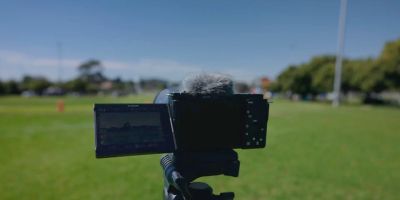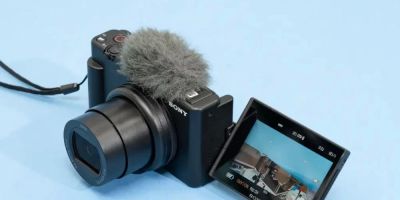How to Photograph Pets Effectively: Tips and Techniques
- 1. Why Pet Photography Is Important
- 2. Essential Gear for Photographing Pets
- 3. Techniques for Capturing Your Pet's Best Side
- 4. Understanding Pet Behavior for Better Shots
- 5. Common Mistakes to Avoid in Pet Photography
- 6. Conclusion: Perfecting Your Pet Photography Skills
1. Why Pet Photography Is Important
Pets are not just animals; they are part of the family. Capturing their personalities and special moments through photography allows you to create lasting memories that can be cherished forever. Whether you’re an amateur photographer or simply want to take great photos for social media or a family album, understanding the basics of pet photography can make all the difference. Pet photography allows you to highlight the love and connection you share with your furry friend, giving you the chance to preserve their most unique expressions and quirks.
Additionally, as more people share their pet photos online, the demand for high-quality pet photography has skyrocketed. For pet owners who want to showcase their beloved companions in the best light, professional-looking photos are now within reach with the right techniques and tools. Whether you’re photographing your pet for personal keepsakes or sharing their cuteness with the world, knowing how to photograph pets effectively is a skill worth developing.
2. Essential Gear for Photographing Pets
Before you start snapping photos of your pets, it’s important to have the right gear. While you don’t necessarily need expensive equipment, having the right camera and accessories can improve the quality of your shots.
1. Camera: A DSLR or mirrorless camera offers the flexibility and control you need to capture high-quality images. These cameras allow you to adjust settings like aperture, shutter speed, and ISO, which are crucial for getting the perfect shot of a moving pet. However, smartphone cameras have become increasingly capable and can be a great option for casual pet photography, especially with the right apps and accessories.
2. Lens: The lens you use can dramatically affect the outcome of your photos. A prime lens (such as a 50mm or 85mm) is often recommended for portraits, as it produces sharp focus with a blurred background, making your pet stand out. A zoom lens can also be useful for capturing pets from a distance, especially if they are too active or shy to come close.
3. Tripod: While not essential for every pet photo, a tripod can help stabilize your camera, especially in low-light settings. If your pet is still and you want to ensure a crisp shot, a tripod can eliminate camera shake and improve the clarity of your images.
4. Lighting: Good lighting is key to great photography. Natural light is ideal, but if you’re shooting indoors, consider investing in a softbox or ring light to enhance your pet’s features. Avoid using the built-in flash, as it can create harsh shadows and make your pet’s eyes look unnaturally bright.
3. Techniques for Capturing Your Pet's Best Side
Knowing how to work with your pet’s personality and movements is crucial to getting the best shot. Each pet is unique, and different techniques will help you capture their essence. Here are some essential tips for photographing pets effectively:
1. Get on Their Level: One of the most important tips for photographing pets is to get down to their eye level. Shooting from above can make your pet appear smaller and less engaging. By crouching down or lying on the floor, you can capture your pet’s natural perspective, which creates more intimate and compelling images.
2. Use the Right Timing: Pets are often more cooperative when they’re relaxed. Capture them during moments of calm, such as when they’re resting or cuddling. You can also take advantage of playtime or walks, but make sure to have your camera ready to snap the perfect action shot.
3. Focus on Eyes: The eyes are one of the most important aspects of any portrait, and this is especially true for pets. Ensure that your camera focuses on their eyes, as this is what draws the viewer in. If you’re using a DSLR or mirrorless camera, consider using single-point autofocus to make sure their eyes are sharp and in focus.
4. Capture Movement Creatively: If your pet is active, don’t be afraid to capture their movements. You can use a fast shutter speed to freeze the action or a slower shutter speed to create a sense of motion. Experiment with different settings to see which ones best reflect your pet’s personality.
4. Understanding Pet Behavior for Better Shots
Understanding your pet’s behavior is crucial when photographing them. The more you know about your pet’s personality and reactions, the better equipped you’ll be to capture those special moments.
1. Patience Is Key: Pets can be unpredictable, so patience is essential. They may not always be in the mood for a photo shoot, and forcing them into a position could result in stress or frustration for both you and your pet. Take breaks if needed, and allow your pet to feel comfortable and relaxed.
2. Use Treats and Toys: If your pet is camera-shy, consider using their favorite toy or treat to grab their attention. Hold the treat near the camera lens to encourage them to look directly at the camera. This technique is especially helpful for capturing more focused shots.
3. Be Ready for Candid Shots: Often, the best pet photos are the candid ones. Keep your camera ready, and capture spontaneous moments of your pet playing, resting, or interacting with their environment. These natural photos often convey the true essence of your pet’s personality.
5. Common Mistakes to Avoid in Pet Photography
While pet photography can be incredibly rewarding, there are several common mistakes that many photographers make. Avoiding these mistakes will help you get the best photos of your furry friends.
1. Poor Lighting: As mentioned earlier, lighting is one of the most important factors in pet photography. Avoid harsh shadows and overly bright areas. Try to shoot during the day when you have access to natural light, or use artificial lighting that is soft and even.
2. Not Using Proper Focus: Focusing on the wrong part of your pet’s body can ruin an otherwise great shot. Always focus on their eyes, as this will give your photo a sense of connection and depth.
3. Over-Cropping: While cropping can help improve your composition, over-cropping can result in a loss of image quality. Try to frame your shot well in the camera to avoid excessive cropping later.
6. Conclusion: Perfecting Your Pet Photography Skills
Photographing pets effectively is a fun and rewarding way to capture memories and showcase your pet’s unique character. By using the right gear, understanding your pet’s behavior, and mastering basic photography techniques, you can take stunning photos that truly highlight your pet’s personality.
Don’t forget to be patient, experiment with different techniques, and most importantly, enjoy the process. With practice, you’ll be able to create a portfolio of beautiful pet photographs that you and your family will treasure for years to come.
If you’re looking for expert photography equipment or want to take your pet photos to the next level, visit Photo Studio for the best recommendations and tips to improve your pet photography skills.





